The Canadian Rocky Mountain Parks are designated as UNESCO World Heritage Sites for their “exceptional natural beauty”.
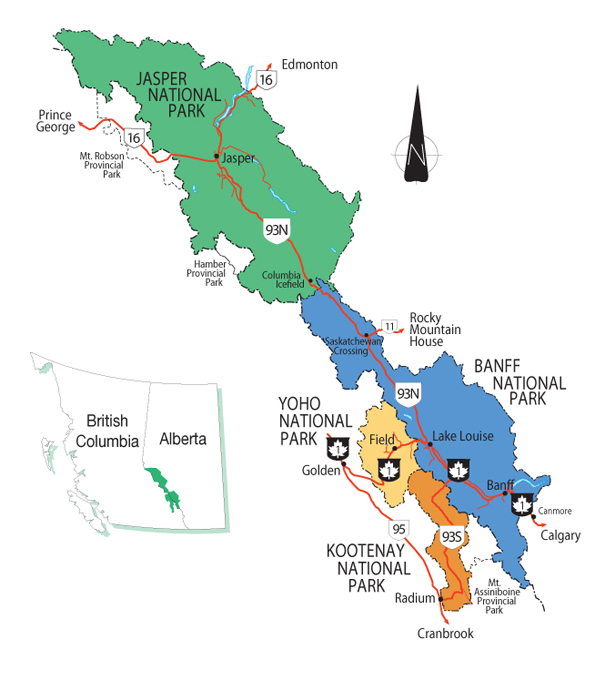
The seven parks – Banff, Jasper, Kootenay, Yoho, Mount Robson, Mount Assiniboine, and Hamber – are known for their scenic mountain peaks, meadows, canyons, caves, hot springs, and glaciers.
Their pristine alpine lakes also draw millions of visitors to the parks each year.
But as we hear so often…
Due to the effects of climate change, these spectacular alpine lakes may also be changing.
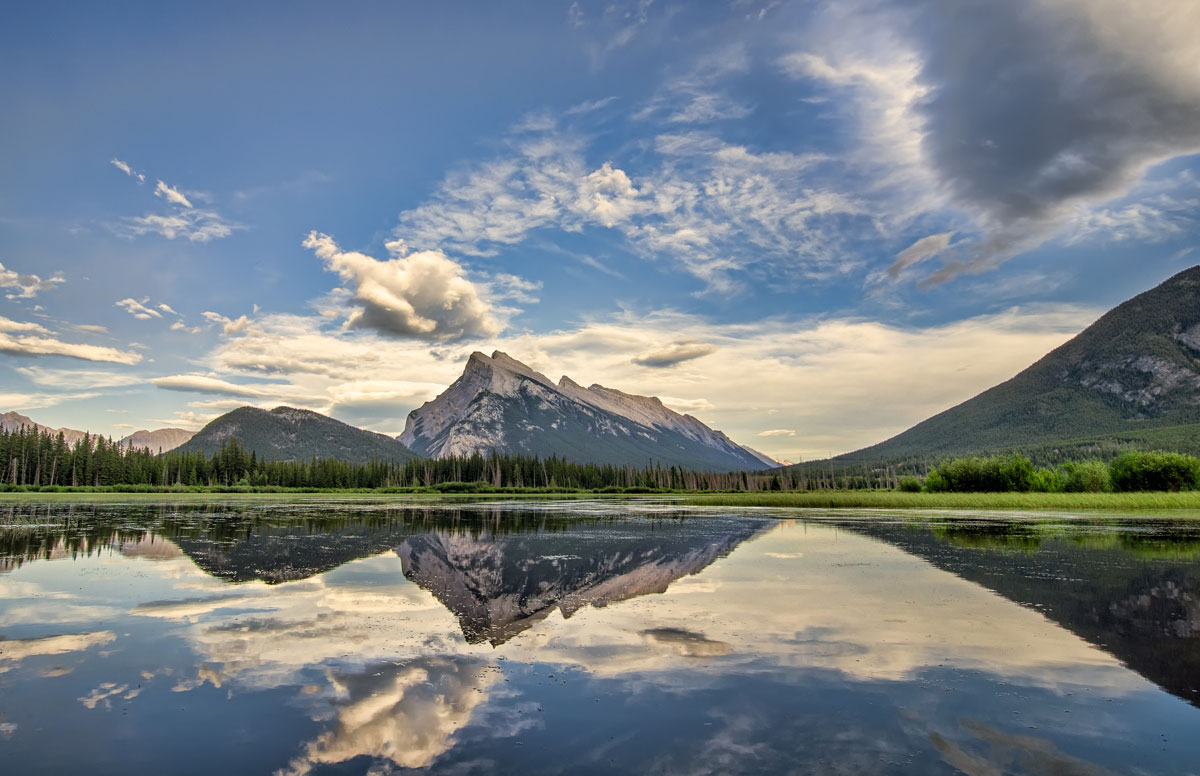
Alpine Lake Transparency
Janet Fischer and Mark Olson, professors in the Biology Department at Franklin & Marshall College in Lancaster, Pennsylvania, are leading a research project that focuses on the causes and effects of changes in alpine lake transparency.
In general, water transparency is a measure of how deeply light penetrates and affects water temperature, algal growth, and exposure of organisms to potentially damaging UV radiation. These factors dictate what aquatic life is present. Water transparency depends on the amount of particles in the water – the more particles, the less transparent.
In the alpine lakes of the Rocky Mountains, transparency is largely controlled by the amount of dissolved organic matter from alpine vegetation and inorganic material from glaciers.
Glacial melt, snow melt, and rainfall are responsible for how the particles reach the lakes. As climate changes, temperatures are rising and precipitation patterns are shifting, inevitably leading to altered rates of material inputs.
Climate change is accelerating glacial melt and vegetation advance, changing the alpine landscapes, and also the types and amounts of transparency-regulating materials entering the lakes.
Their research aims to compare lake responses to these rain and snowmelt driven inputs and use the results to enable more accurate predictions of responses over time, as the climate changes.
Short-Term Changes in Lake Transparency
Janet and Mark have been studying alpine lakes for the past 15 years. Through their research, they have observed the variation in lake transparency on an interannual scale (from one year to the next).
However, their latest research aims to observe seasonal and short-term changes in the factors regulating lake transparency.
They study a set of five lakes located in Banff and Yoho National Parks. The lakes share many attributes, but represent different phases of glacial loss and vegetation advance, and therefore catchment material differences.
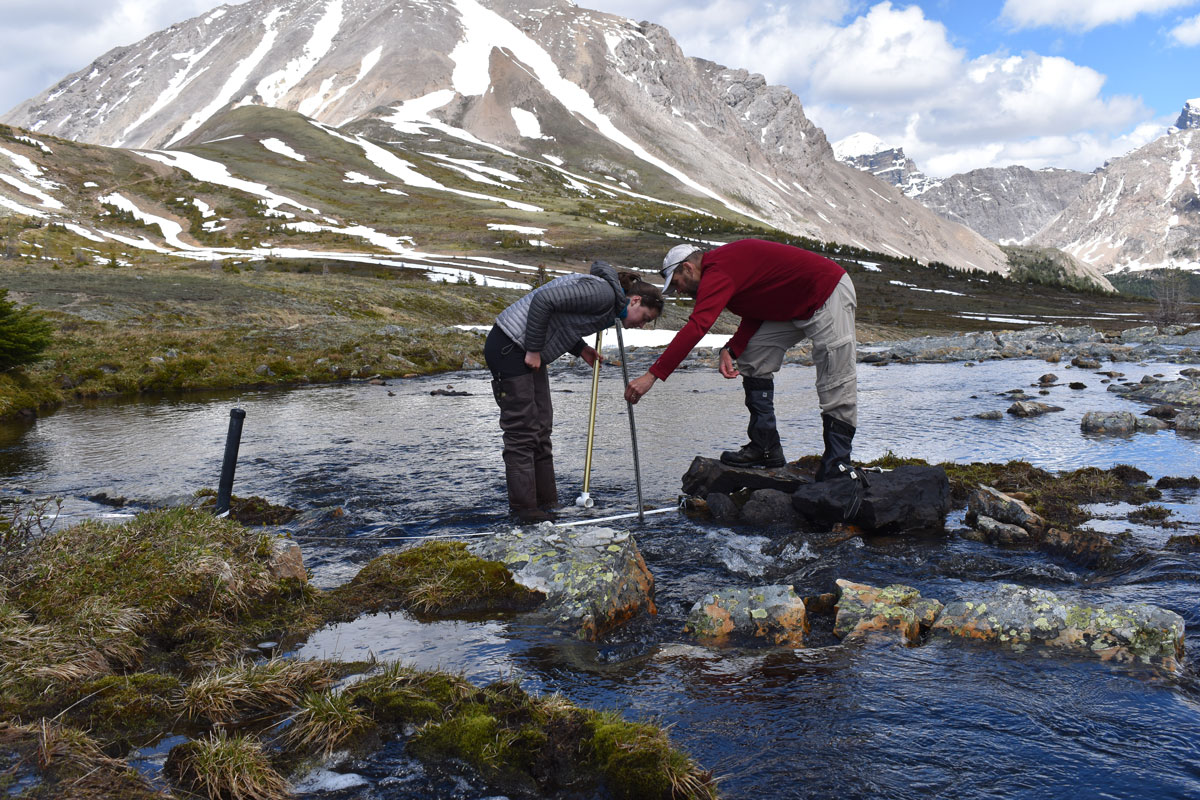
With the help of undergraduate field assistants from Franklin & Marshall College, sensors are deployed in the lakes during the ice-free season. They measure dissolved organic matter and turbidity on an hourly basis. The readings provide an idea of the changes in transparency-regulating materials throughout a season.
How Leveloggers are Playing a Role
As part of the project, Solinst Leveloggers were placed in four of study lakes, with additional Leveloggers installed in the outflow streams of a subset of the lakes.
Janet and Mark are collaborating efforts with Masaki Hayashi of the University of Calgary. Masaki is an authority on alpine hydrology. He has previously used Solinst Leveloggers and had already deployed Leveloggers in one study lake, so recommended them for the remaining four.
Janet also notes, “The size, ease of deployment, durability, and logging capabilities matched our needs perfectly.”
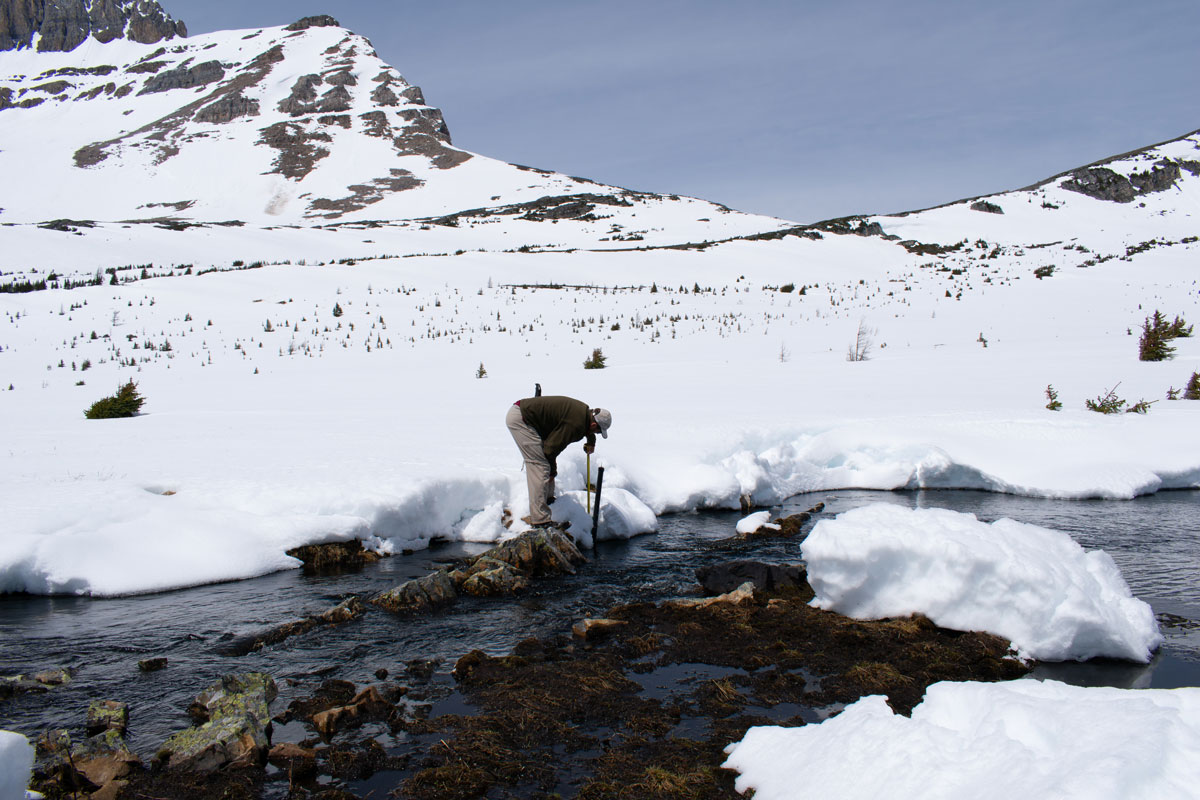
The Leveloggers are deployed in stilling wells in the lakes. A Barologger is also deployed at each site to provide data for barometrically compensating the water level data.
The Leveloggers are set to measure surface water levels over the course of a season, as well as short-term response to meteorological conditions (e.g. precipitation events and temperature changes).
Leveloggers record data every 30 minutes. After downloading data, the measurements are averaged to daily means to match the time scale of meteorological measurements. Data are stored in excel format and can be shared upon request.
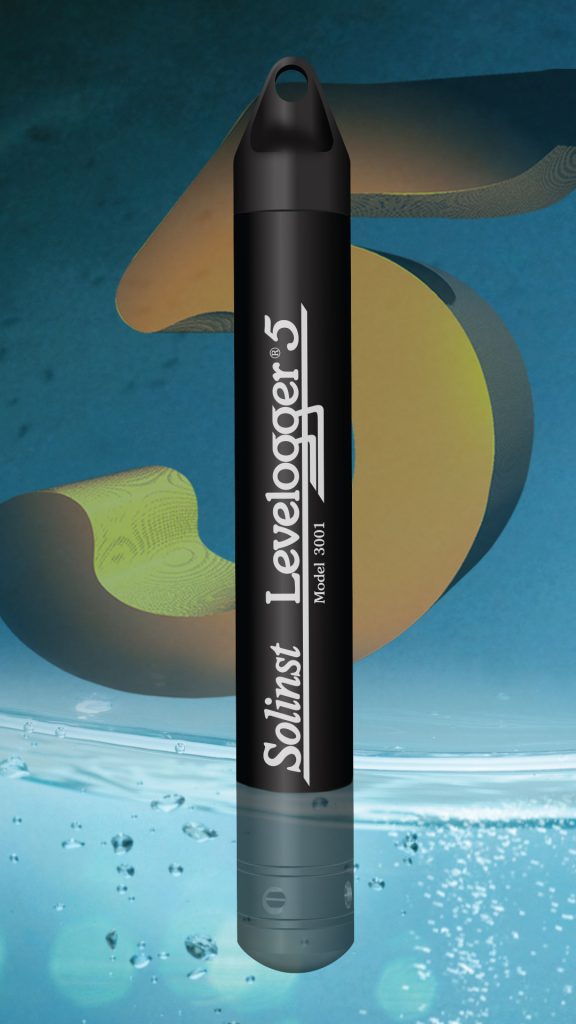
The Model 3001 Levelogger 5 is an accurate water level and temperature datalogger that provides a compact method of recording uninterrupted, long-term data. The Levelogger 5 consists of an absolute pressure sensor, temperature thermistor, datalogger and 10-year lithium battery, in a stainless steel housing with a PFAS-free corrosion-resistant coating inside and out. A memory for 150,000 sets of readings allows higher-resolution data with more frequent readings. Accuracy is 0.05% FS.
Get a Quote!
Leveloggers help document lake level responses to rainfall events and warm spells that accelerate glacial melt. This allows the researchers to observe the connection between meteorological conditions and the changes in dissolved organic matter or turbidity.
As each of the five study lakes has different catchment characteristics, comparing this relationship among the lakes provides insight into potential changes over time.
Challenges and Future Research
Alpine lake research does bring its challenges!
The sites are remote and can only be accessed by foot; hikes can be up to two hours with elevation changes of more than 500 m. All equipment must be carried on their backs. The mountain terrain also brings unpredictable weather. Janet says, “We might start a hike in shorts but it might be snowing at the lake.”
Despite the challenges, Janet and Mark are committed and plan to expand their research.
They recently purchased more Leveloggers and two Barologgers to add two more lakes to their study, and have begun a new collaboration with Richelle Allen-King, a hydrogeochemist at the University at Buffalo.
Their research also has good backing, with a research permit from Parks Canada and funding from the National Science Foundation in the US.
Overall, their continued research will help provide a predictive understanding of the effects of climate change on alpine lakes. This will help give a picture of what these pristine lakes may look like in the future.
